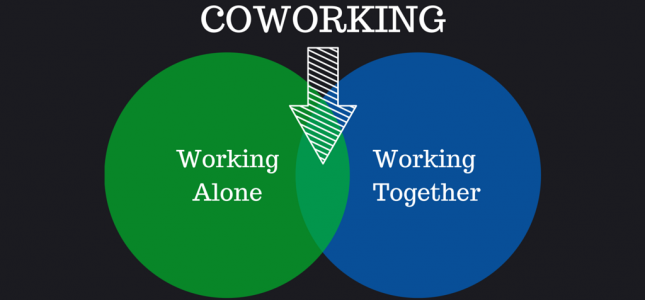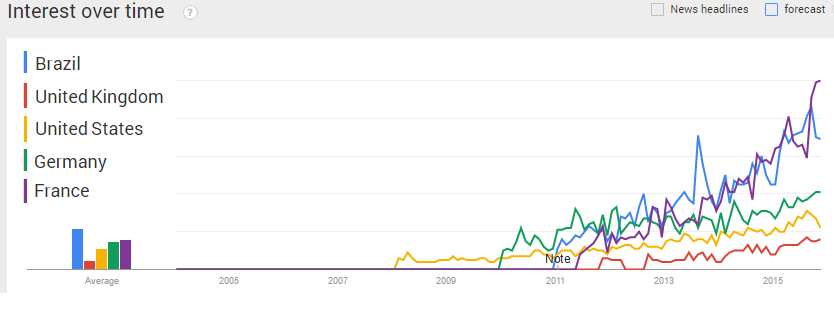You’ve probably heard of “coworking spaces” in an article, through a friend or because you actually work in one. They are essentially innovative open office spaces that allow for entrepreneurs, freelancers and remote workers to share furniture, a roof, WiFi and company. I myself am actually based in one. As this concept is only going to grow I thought I would share what it is and how it’s helped my business.
A (Very) Brief History of Coworking
- In 2005, Hat Factory, the first official “coworking space” was opened in San Francisco by programmer Brad Neuberg as reaction to “unsocial” business centres and the unproductive work-life at a home office.
- In 2006 the Coworking Wiki website goes live as the hub for the coworking movement.
- In 2010 Deskmag, the first official online magazine dedicated to coworking, goes live.
- By 2012 there officially more than 2,000 coworking spaces across the world.
- By 2013 there are officially at least 781 coworking spaces in the US alone.
Want to find out more? Deskmag have created a neat little interactive timeline charting the history from 2006 – 2015: The History Of Coworking
Coworking Space, Defined
What Coworking is:
Wikipedia definition: “Coworking is a style of work that involves a shared working environment, often an office, and independent activity.”
Deskmag definition: “Every workspace with flexible structures that is designed for and by people with atypical, new types of work – that is not exclusively for people from one certain company.”
Oxford Dictionary definition: “The use of an office or other working environment by people who are self-employed or working for different employers, typically so as to share equipment, ideas, and knowledge”
What Coworking is not (always):
Now we have defined what a coworking space is, I thought it was important to clear up any misconceptions:
- Coworking spaces are not only for independent freelancers.
- Coworking spaces are not business accelerators, incubators and executive suites.
- Members of coworking spaces do not always work in different industries.
- Coworking spaces do not always consist of big shared spaces, in contrast to several small office-units.
- Coworking spaces do not always have hot-desks.
- Coworking spaces do not always have variable memberships.
- Coworking spaces are not all open to drop-ins and visitors.
- Coworking spaces do not always host events for their members and other people.
Coworking by the Numbers
I thought it would be useful to break down some of the more recent coworking related stats:
- By 2020, more than 40% of the American workforce will consist of freelancers, solopreneurs, independent contractors and temps. (Intuit study)
- 91% of co-workers agree that working together is a great way to interact with people from different fields and improves communication skills (Entrepreneurial-Insights)
- 70% of co-workers believe that working together independently under the same roof is much better than working from a cubicle in a jam-packed traditional office setting. (Entrepreneurial-Insights)
- Between a third and half of all workers are flexible and mobile (Regus)
- Coworking spaces in America has gone from one to 781 since 2005. (Boston Business Journal Survey)
A Deskmag 2015 survey revealed the following coworking stats:
- 64 percent of coworkers are better able to complete tasks on time
- 71% of respondents said their creativity had increased since joining
- 62% said their standard of work had improved. Countering the common claim that coworking spaces can be distracting
- 68% said they were able to focus better, as compared to 12% who said the opposite.
- 70% of coworkers feel healthier than they did working in a traditional office
- 50% of all coworkers access their work space around the clock
- 53% are freelancers, while the remainder are entrepreneurs, small company employees, big company employees
- The average coworking space membership size is 44
- 62% said they have no plans to leave their locations, while less than 5% will stay just for one month, disproving the notion that coworking is for mobile workers only.
Google Trends chart for “coworking” shows the term’s search popularity rising continuously since 2007.
If you split this global data out by country we can see Brazil and France surging ahead:
This graph from Global Coworking Map charts the rise of total coworking spaces year to year.
Why Coworking Works For Me
Since starting my business in early 2014 I have been based in a central Manchester coworking space called The Assembly. I wanted to give you a bit of first hand account of why coworking works for me and my consultancy business.
1. Price
So from a price point of view this particular coworking space fits my budget. I pay £160 per month which includes the rental of my own desk, speedy WiFi, electricity, printer use, 24/7 access, a meeting room plus tea and coffee. I can also have another member of staff in up to 14 hours per week without paying an additional fee.
2. Location
My commute is a whole 4 minutes from flat door to office by foot. You simply cant put a price on that kind of time saving (probably can but I haven’t got time to work it out). Around the office you have a range of cafes, car parks, public transport and shops.
3. Collaboration
At work I am surrounded by a wide range of individuals and group businesses. They are management consultants, graphic designers, web designers, photographers, music producers, to name but a few. I have had work directly through and for those who share the space with me.
4. Work Life Separation
Before I even officially launched my business I knew that I simply couldn’t work from home. I wanted to draw a clear line in the sand between my work and personal lives. By having an office where I leave my laptop Monday – Friday I can leave the office knowing I am leaving work and starting my free time. If I do feel like doing some work at odd hours of the day or weekend the 24/7 access allows me to do just that.
5. Grounding
I think its important to have a HQ for your business. Somewhere your parcels, bills, HMRC documents etc can be sent. An address that can go on your website, email signature and business cards. Obviously somewhere that is in a desirable or central location is going to benefit you if you need to arrange client meetings etc.
Coworking Space Facilities
The owner of the coworking space provides a work environment and, often, the following typical facilities/amenities:
- Shared work spaces.
- 24/7 access.
- Reservable/rentable conference and/or board rooms.
- Wi-Fi.
- Communal printer/copier/fax.
- Shared kitchens, bathrooms and/or lounges.
Find A Coworking Space
Have I inspired you to move to or into a coworking space? If so then here is a useful list of resources for you:
- This is a super list of coworking directories: http://wiki.coworking.org/w/page/16583831/FrontPage
- I would also recommend checking out http://Included.co who can help you find a desk and some great deals / discounts to go with it.
- This site hosts a great Coworking Map where you can search for and zoom into areas: http://coworkingmap.org/
- Here you can find a very useful resource entitled ‘The Ultimate Guide to Co-working Spaces’: http://www.entrepreneurial-insights.com/ultimate-guide-co-working-spaces/
- There’s even new iPhone app to help you find a coworking space near you: http://itunes.apple.com/us/app/coworking/id400569601
- The www.sharedesk.net website offers a neat search and book function.
Coworking Survey
If you are actually based in a coworking space, I would encourage you to take this Deskmag coworker survey: http://www.coworkingsurvey.com




